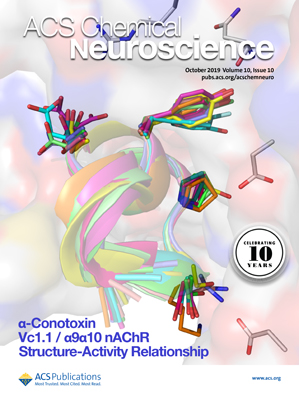Functional Characterization of an Arylsulfonamide-Based Small-Molecule Inhibitor of the NLRP3 Inflammasome
IF 4.1
3区 医学
Q2 BIOCHEMISTRY & MOLECULAR BIOLOGY
引用次数: 0
Abstract
Considerable evidence indicates that the NOD-like receptor family pyrin domain-containing 3 (NLRP3) inflammasome plays key roles in human pathophysiology, suggesting it as a potential drug target. Currently, studies have yet to develop compounds that are promising therapeutics in the clinic by targeting the NLRP3 inflammasome. Herein, we aim to further biologically characterize a previously identified small-molecule inhibitor of the NLRP3 inflammasome from our group, YM-I-26, to confirm its functional activities. We showed that YM-I-26 is highly selective toward the NLRP3 inflammasome and binds to NLRP3 directly. A systemic analysis revealed YM-I-26 with inflammation-related and immunomodulatory activities by the Eurofins BioMAP Diversity PLUS panel. In addition, studies using the mouse microglia BV2 cell model demonstrated that YM-I-26 is not cytotoxic, improved the phagocytotic functions of BV2 cells toward beta-amyloid, and suppressed the production of cytokines of IL-1β and IL-10 upon the activation of the NLRP3 inflammasome. Collectively, our studies support the functional activities of YM-I-26 as a NLRP3 inhibitor in physiologically relevant cell models, and warrant future studies of YM-I-26 and its analogs to advance the drug development as potential therapeutics.

基于芳基磺酰胺的 NLRP3 炎症体小分子抑制剂的功能表征
大量证据表明,NOD 样受体家族含 pyrin 结构域的 3(NLRP3)炎性体在人类病理生理学中起着关键作用,这表明它是一个潜在的药物靶点。目前,针对 NLRP3 炎性体的研究还没有开发出有望用于临床治疗的化合物。在此,我们旨在进一步研究本研究组之前发现的一种NLRP3炎性体小分子抑制剂YM-I-26的生物学特性,以确认其功能活性。我们的研究表明,YM-I-26 对 NLRP3 炎性体具有高度选择性,能直接与 NLRP3 结合。一项系统分析显示,YM-I-26 具有炎症相关和免疫调节活性。此外,利用小鼠小胶质细胞 BV2 细胞模型进行的研究表明,YM-I-26 不具有细胞毒性,能提高 BV2 细胞对β-淀粉样蛋白的吞噬功能,并能抑制 NLRP3 炎症小体激活后 IL-1β 和 IL-10 细胞因子的产生。总之,我们的研究支持YM-I-26作为一种NLRP3抑制剂在生理相关细胞模型中的功能活性,并保证了YM-I-26及其类似物未来作为潜在治疗药物的研究进展。
本文章由计算机程序翻译,如有差异,请以英文原文为准。
求助全文
约1分钟内获得全文
求助全文
来源期刊

ACS Chemical Neuroscience
BIOCHEMISTRY & MOLECULAR BIOLOGY-CHEMISTRY, MEDICINAL
CiteScore
9.20
自引率
4.00%
发文量
323
审稿时长
1 months
期刊介绍:
ACS Chemical Neuroscience publishes high-quality research articles and reviews that showcase chemical, quantitative biological, biophysical and bioengineering approaches to the understanding of the nervous system and to the development of new treatments for neurological disorders. Research in the journal focuses on aspects of chemical neurobiology and bio-neurochemistry such as the following:
Neurotransmitters and receptors
Neuropharmaceuticals and therapeutics
Neural development—Plasticity, and degeneration
Chemical, physical, and computational methods in neuroscience
Neuronal diseases—basis, detection, and treatment
Mechanism of aging, learning, memory and behavior
Pain and sensory processing
Neurotoxins
Neuroscience-inspired bioengineering
Development of methods in chemical neurobiology
Neuroimaging agents and technologies
Animal models for central nervous system diseases
Behavioral research
 求助内容:
求助内容: 应助结果提醒方式:
应助结果提醒方式:


